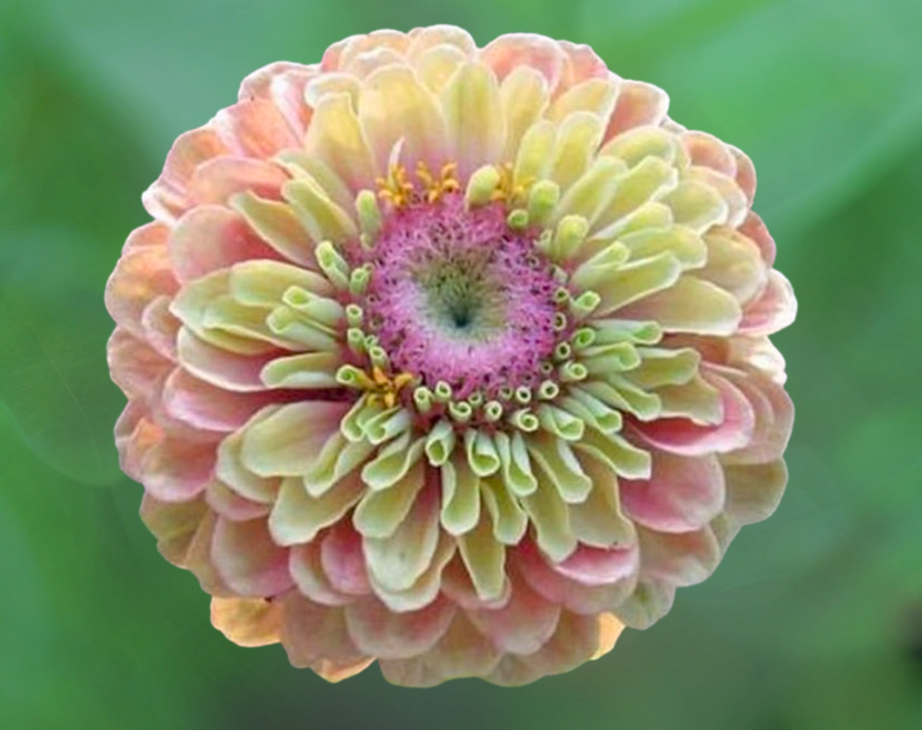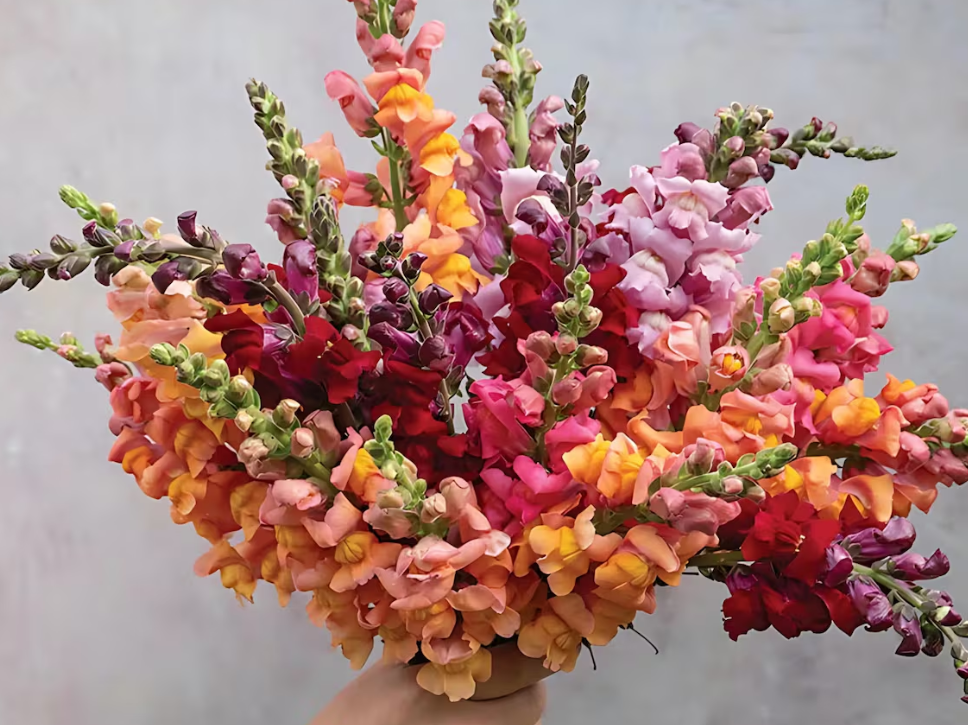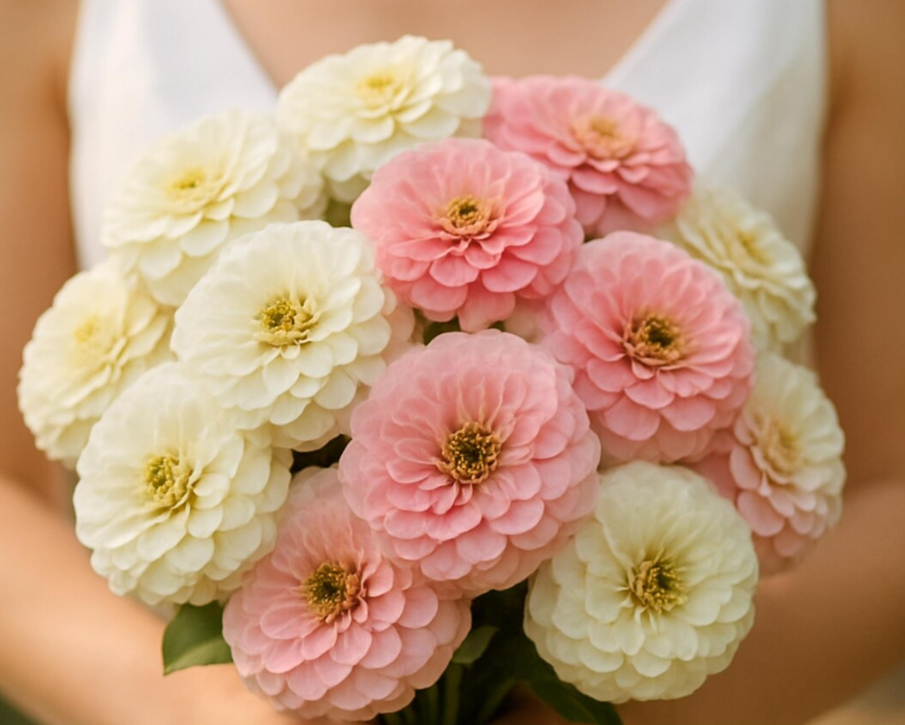Etsy Shop!
Heirloom, Non-GMO, and Organic Seeds

Popular Edition
Queeny Lime Zinnias
6.99 USD

Popular Edition
Canned Snapdragon Mix
6.99 USD

Popular Edition
Blushing Bride Zinnias
6.99 USD
News & Articles
Where to Buy High-Quality Zinnia Seeds:
Elevate Your Cut Flower Garden
Stop settling for generic mixes. Get the Benary’s Giants, Queen, and State Fair heirloom varieties trusted by professional growers.
Why Choose Goshen Seed Co. Zinnias?
Certified High Germination Rate
We rigorously test every seed lot. Our high viability means fewer wasted seeds and a full, lush garden guaranteed.
Heirloom & Open-Pollinated Purity
Unlike F1 hybrids, our seeds are true-to-type. You get stable colors, strong stems, and the ability to save your own seed.
The Sturdy Stem Guarantee
We source genetics bred for cutting, ensuring long, straight stems perfect for florists and home bouquets.
Grower’s FAQ
Yes to both. Pinching is done early (when the plant is 6–10 inches tall) to promote branching and bushier plants. Deadheading is done continuously by removing spent flowers to encourage new blooms and redirect energy away from seed production.
Yes. Zinnias absolutely require full sun (a minimum of 6 hours of direct sunlight) to promote strong, sturdy stem development and overall plant health. Less sun leads to weaker, leggy plants.
Harvest at the optimal time (when ray petals are fully open and the stem is stiff—pass the wiggle test!). Place the stems in a clean vase with plain tap water and change the water every three days. Avoid harvesting too late in the bloom cycle.
(Browse our full collection on Etsy)
The Ultimate Guide to Heirloom Zinnia Seeds: Where to Buy High-Quality Zinnia Seeds for Your Cut Flower Garden
If you’ve ever grown zinnias, you know the magic they bring to a summer garden. Their bright, cheerful colors and incredible productivity make them a favorite of gardeners everywhere, especially those who love to fill their homes with bouquets. But here’s a secret that separates a *good* zinnia patch from a truly *spectacular* one: it all starts with the seed.
You can’t achieve those towering, perfectly-formed blooms and robust, straight stems with just any packet of seeds from a big-box store. For a truly high-quality harvest, you need high-quality seeds—specifically, heirloom and open-pollinated varieties from reputable, specialty sources.
In this ultimate guide, we’ll not only show you exactly where to buy the best zinnia seeds but also share the expert tips and tricks to transform your garden into a zinnia cutting paradise.
Why Choose High-Quality Zinnia Flower Seeds?
The term “high-quality” isn’t just marketing jargon; it’s a measure of genetic purity, vigor, and germination rate. Investing a little more in premium seeds pays dividends in the garden, and here’s why:
- High Germination Rate: Premium seeds are typically newer, stored properly, and rigorously tested for viability. This means you get a higher percentage of seeds that actually sprout, saving you time and frustration.
- True-to-Type Blooms: When you buy a named heirloom variety—like ‘Benary’s Giant Lime Green’—from a reputable seed house, you are guaranteed that the flowers will look exactly as described. Cheap, generic mixes can often result in disappointing colors, single-petaled flowers, or a lower percentage of the highly desirable double blooms.
- Vigorous, Disease-Resistant Plants: High-quality seed breeders select for traits like strong stems and resistance to common zinnia ailments, such as powdery mildew. This means less maintenance and a longer, healthier blooming season for you.
- Open-Pollinated and Heirloom Genetics: Our focus is on heirloom and open-pollinated seeds. Unlike commercial F1 hybrids, these varieties are stable, meaning you can save the seeds from your best flowers year after year, and they will grow “true” to the parent plant. This sustainability is the heart of what we do at Goshen Seed Co.
Best Zinnia Varieties for Cut Flowers and Sturdy Stems
For the dedicated cut flower gardener, not all zinnias are created equal. You need tall, double-petaled varieties with stems that are straight and stiff enough to stand up in a vase.
Here are the gold-standard varieties to look for when you’re shopping for high-quality seeds:
- Benary’s Giant Series: Considered the professional standard for cut flower growers. These produce enormous, perfectly domed, double flowers (3–6 inches wide) on stems that can easily reach 4 feet tall. The color range is stunning.
- State Fair Series: A classic, extra-tall variety known for its huge, sturdy flowers and plants that grow up to 3 feet high. They are incredibly reliable and come in vibrant, traditional zinnia colors.
- Queen Series (e.g., ‘Queeny Lime Blush’): These feature unique, complex color blends—often a subtle lime green with shades of pink, rose, or magenta—and are highly sought after by florists. They are a must-have for sophisticated bouquets. (Check out our Queeny Lime Blush Zinnia Seeds for a truly unique bloom.)
- Oklahoma Series: A smaller, more manageable plant that is excellent for smaller bouquets and provides abundant blooms all season. Their flowers are semi-double and incredibly productive.
Where to Buy High-Quality Zinnia Seeds
When purchasing premium heirloom zinnia seeds, you should bypass the mass-market stores and focus on sources dedicated to seed preservation and quality control.
1. Dedicated Heirloom Seed Companies
These companies specialize in rare, open-pollinated, and heirloom varieties. They often have the most detailed information on a seed’s history, growing habits, and true color. They rigorously test germination rates, ensuring you get the best product. They are the top choice for discerning gardeners.
2. Small-Scale Artisan Seed Growers
Many small farms and passionate gardeners have started their own seed companies, particularly through online marketplaces. These growers often offer hyper-specific, rare, or unique color blends that you won’t find anywhere else. For example, if you are looking for a stunning pastel mix, seeking out an artisan grower might be your best bet (like our beautiful Blushing Bride Zinnia Seeds Mix). Their commitment to the purity of a single variety is often unmatched.
3. Specialty Cut Flower Seed Collections
To save time, look for pre-curated collections specifically marketed toward cut flower growers. These bundles are often designed to give you a range of colors and bloom types, ensuring a harmonious and productive cutting garden. (Explore our Heirloom Zinnia Seed Collection for a head start.)
Tips for Buying Bulk Zinnia Seeds for Your Garden
If you plan to grow enough zinnias to fill vases all summer long—or if you are a market grower—buying in bulk is the most economical and efficient choice.
- Check the Count vs. the Weight: Reputable bulk sellers will typically list the seed count, not just the weight. This gives you a more accurate idea of how many plants you can expect.
- Inquire About Storage and Freshness: Ask the supplier how the seeds have been stored (ideally in cool, dry conditions) and confirm they are from the most recent growing season. Seed viability decreases over time.
- Confirm the Cultivar: Ensure the bulk seed is a named, high-quality cultivar (like ‘Benary’s Giant’) rather than a generic “cut flower mix,” which can be inconsistent.
How to Grow Zinnias from Seed: Starting Indoors and Direct Sowing
Zinnias are one of the easiest flowers to grow from seed, but a few key steps will maximize your success.
Starting Indoors (Optional, for Early Blooms)
- Timing: Start seeds indoors 4–6 weeks before your last expected frost date. Zinnias grow *fast*, so don’t start them too early.
- Planting: Sow seeds about 1/4 inch deep in individual cells or soil blocks. Zinnias dislike root disturbance, so avoid handling the roots when transplanting.
- Light: Provide strong light immediately, either with a south-facing window or, ideally, a powerful grow light, to prevent “leggy” (floppy) seedlings.
Direct Sowing (Recommended for Most Gardeners)
- Timing: Wait until all danger of frost has passed and the soil has warmed up to at least $60^\circ$F ($15^\circ$C). This is often two weeks after your last frost date. Zinnias love the heat!
- Planting: Rake the area clear, scatter the seeds lightly, and cover them with about 1/4 inch of fine soil.
- Thinning: Once seedlings have their first set of true leaves, thin them out to stand 9–12 inches apart. This ensures good airflow (to prevent disease) and gives each plant the space it needs to become a sturdy bush.
Maximizing Zinnia Blooms: Pinching, Deadheading, and Harvesting
The secret to endless zinnia blooms is continuous, strategic intervention.
Pinching: Promote Bushiness and More Blooms
Pinching is a critical step for cut-flower zinnias. When the seedling reaches about 6–10 inches tall and has 3–4 sets of true leaves, use clean snips to cut off the central stem just above a leaf node. This sacrificial cut will force the plant to grow multiple side shoots, resulting in a bushier plant with many more flowering stems.
Deadheading: The Power of Removal
Deadheading—the removal of spent or faded flowers—signals to the plant that it has not successfully produced seed and must try harder. This is a powerful way to redirect energy into producing new blooms instead of mature seeds, extending your flowering season well into the fall.
The “Wiggle Test” for Harvesting
Zinnias should only be harvested for the vase when their stems are fully hardened. Perform the “wiggle test”: grab the stem a few inches below the flower and gently wiggle it.
- If the stem is floppy at the top: It’s too early. The flower head won’t last in the vase.
- If the stem is stiff and doesn’t bend easily: It’s ready! Harvest this stem for maximum vase life.
Key Takeaways
- Invest in Quality: High-quality, tested heirloom seeds ensure higher germination rates and true-to-type, vigorous plants.
- Choose the Right Variety: For cut flowers, prioritize tall, large-flowered cultivars like the Benary’s Giants or the unique Queen Series.
- Find Specialty Sources: Purchase your seeds from dedicated heirloom seed companies or small artisan growers rather than generic big-box stores.
- Pinch for Productivity: Pinching the central stem early (at 6–10 inches tall) is essential to create a bushy plant that yields dozens of cutting stems.
- Harvest with the Wiggle Test: Only cut flowers for the vase when the stem is stiff to the touch, ensuring maximum longevity in your floral arrangements.

